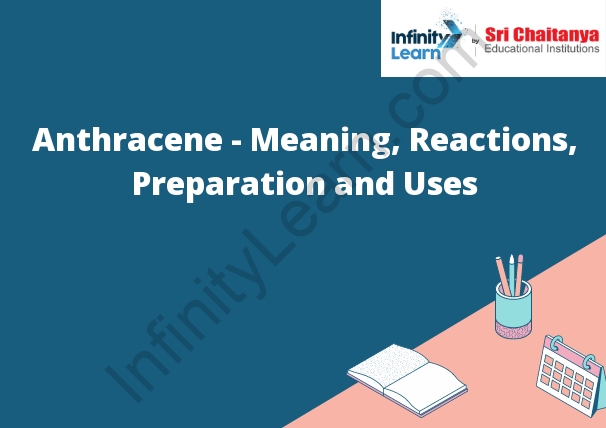Table of Contents
What is Anthracene?
Anthracene – Meaning:
Anthracene is a white crystalline solid with a characteristic coal-like odor. It is a polycyclic aromatic hydrocarbon and is derived from coal tar.

Anthracene Sigma Aldrich
Anthracene is a hydrocarbon that consists of three fused benzene rings. It is a colorless solid that is insoluble in water but soluble in organic solvents. Anthracene is used in the production of dyes and other organic chemicals.
Anthracene Sigma Bond
Anthracene has a singlet sigma bond between the carbon atoms at positions 1 and 2. This bond is relatively weak, and the carbon atoms can rotate around it relatively easily. This allows the carbon atoms to move closer together or further apart, which affects the shape of the anthracene molecule.
Reactions of Anthracene
Anthracene is a hydrocarbon with three benzene rings fused together. When it is burned in the presence of oxygen, it undergoes a series of reactions to form carbon dioxide and water. The first step is the oxidation of anthracene to anthraquinone:
2C14 + O2→ 2C9O2
The anthraquinone then undergoes a series of reactions to form carbon dioxide and water.
Use of Anthracene
- Anthracene is used in the production of polyanthraquinone, a precursor to various synthetic dyes.
- Anthracene is also used as a starting material for the synthesis of other chemicals, including certain pharmaceuticals.
- Additionally, anthracene is used as a light-emitting material in some electronic devices.
How to Identify Anthracene?
Anthracene is a white, crystalline solid with a characteristic smell. It is soluble in organic solvents, but insoluble in water. Anthracene can be identified by its characteristic smell, its solubility in organic solvents, and its insolubility in water.
How to Reduce Exposure to Anthracene?
There is no real way to reduce exposure to anthracene. However, avoiding contact with products that contain anthracene is the best way to reduce exposure.
Dimerization of Anthracene-1,3,5-Trisulfonate
Anthracene-1,3,5-trisulfonate can dimerize in the presence of a base to form a 1,3,5-triphenylbenzene molecule.
Oxidation of Anthracene
Anthracene is oxidized to anthraquinone by potassium permanganate.
2 C14H10 → C14H8O2 + 2 C14H8
The two benzene rings are converted into two quinone rings.









